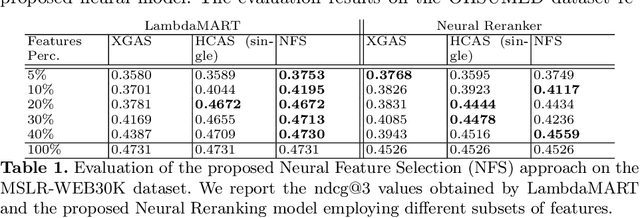Gianmaria Silvello
Testing software for non-discrimination: an updated and extended audit in the Italian car insurance domain
Feb 10, 2025Abstract:Context. As software systems become more integrated into society's infrastructure, the responsibility of software professionals to ensure compliance with various non-functional requirements increases. These requirements include security, safety, privacy, and, increasingly, non-discrimination. Motivation. Fairness in pricing algorithms grants equitable access to basic services without discriminating on the basis of protected attributes. Method. We replicate a previous empirical study that used black box testing to audit pricing algorithms used by Italian car insurance companies, accessible through a popular online system. With respect to the previous study, we enlarged the number of tests and the number of demographic variables under analysis. Results. Our work confirms and extends previous findings, highlighting the problematic permanence of discrimination across time: demographic variables significantly impact pricing to this day, with birthplace remaining the main discriminatory factor against individuals not born in Italian cities. We also found that driver profiles can determine the number of quotes available to the user, denying equal opportunities to all. Conclusion. The study underscores the importance of testing for non-discrimination in software systems that affect people's everyday lives. Performing algorithmic audits over time makes it possible to evaluate the evolution of such algorithms. It also demonstrates the role that empirical software engineering can play in making software systems more accountable.
Automatic Labels are as Effective as Manual Labels in Biomedical Images Classification with Deep Learning
Jun 20, 2024Abstract:The increasing availability of biomedical data is helping to design more robust deep learning (DL) algorithms to analyze biomedical samples. Currently, one of the main limitations to train DL algorithms to perform a specific task is the need for medical experts to label data. Automatic methods to label data exist, however automatic labels can be noisy and it is not completely clear when automatic labels can be adopted to train DL models. This paper aims to investigate under which circumstances automatic labels can be adopted to train a DL model on the classification of Whole Slide Images (WSI). The analysis involves multiple architectures, such as Convolutional Neural Networks (CNN) and Vision Transformer (ViT), and over 10000 WSIs, collected from three use cases: celiac disease, lung cancer and colon cancer, which one including respectively binary, multiclass and multilabel data. The results allow identifying 10% as the percentage of noisy labels that lead to train competitive models for the classification of WSIs. Therefore, an algorithm generating automatic labels needs to fit this criterion to be adopted. The application of the Semantic Knowledge Extractor Tool (SKET) algorithm to generate automatic labels leads to performance comparable to the one obtained with manual labels, since it generates a percentage of noisy labels between 2-5%. Automatic labels are as effective as manual ones, reaching solid performance comparable to the one obtained training models with manual labels.
Learning to Rank from Relevance Judgments Distributions
Feb 13, 2022



Abstract:Learning to Rank (LETOR) algorithms are usually trained on annotated corpora where a single relevance label is assigned to each available document-topic pair. Within the Cranfield framework, relevance labels result from merging either multiple expertly curated or crowdsourced human assessments. In this paper, we explore how to train LETOR models with relevance judgments distributions (either real or synthetically generated) assigned to document-topic pairs instead of single-valued relevance labels. We propose five new probabilistic loss functions to deal with the higher expressive power provided by relevance judgments distributions and show how they can be applied both to neural and GBM architectures. Moreover, we show how training a LETOR model on a sampled version of the relevance judgments from certain probability distributions can improve its performance when relying either on traditional or probabilistic loss functions. Finally, we validate our hypothesis on real-world crowdsourced relevance judgments distributions. Overall, we observe that relying on relevance judgments distributions to train different LETOR models can boost their performance and even outperform strong baselines such as LambdaMART on several test collections.
Neural Feature Selection for Learning to Rank
Feb 22, 2021


Abstract:LEarning TO Rank (LETOR) is a research area in the field of Information Retrieval (IR) where machine learning models are employed to rank a set of items. In the past few years, neural LETOR approaches have become a competitive alternative to traditional ones like LambdaMART. However, neural architectures performance grew proportionally to their complexity and size. This can be an obstacle for their adoption in large-scale search systems where a model size impacts latency and update time. For this reason, we propose an architecture-agnostic approach based on a neural LETOR model to reduce the size of its input by up to 60% without affecting the system performance. This approach also allows to reduce a LETOR model complexity and, therefore, its training and inference time up to 50%.
 Add to Chrome
Add to Chrome Add to Firefox
Add to Firefox Add to Edge
Add to Edge